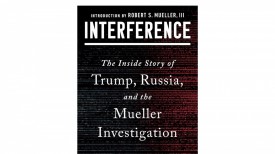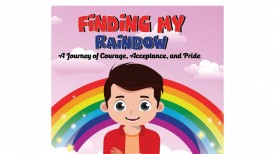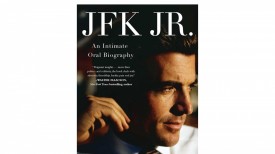Eileen’s Book-to-Movie Differences: Director William Oldroyd Explains the Changes in Plot

Newly released movie ‘Eileen’ unfolds gripping plot twists and thematic shifts. Director William Oldroyd delves into the intriguing changes, from altering the wielder of a deadly weapon to exploring Eileen's traumatic past. The film's conclusion diverges dramatically from the novel, leaving audiences contemplating the fates of Eileen and Rebecca. (Photo : Getty Images/Gareth Cattermole)
Starting its limited theatrical run on December 1, the film 'Eileen' is anticipated to captivate audiences with its enigmatic storyline and compelling acting. Adapted from Ottessa Moshfegh's 2015 novel, the cinematic adaptation had some notable changes in plot, deviating from the original story.
'Eileen' is a movie that takes you on a journey and presents itself as one thing but takes on an unexpected turn. The film revolves around a significant twist occurring about two-thirds into its duration. The unassuming Eileen, portrayed by Thomasin McKenzie, discovers that her stylish colleague Rebecca, played by Anne Hathaway, has invited her over on Christmas Eve under deceitful pretenses. To Eileen's surprise, the messy kitchen where they share red wine in coffee cups does not belong to Rebecca; instead, it is the property of the Polk family. The Polk family's son, Lee, is confined in the juvenile prison where Eileen and Rebecca work.
Director William Oldroyd's latest thriller, 'Eileen,' shows various twists as the movie shifts the responsibility of a deadly weapon from prison psychologist Rebecca to jail Eileen. In the novel, it was Rebecca who fired the shots. Director Oldroyd explains the reason why Eileen is in the position to kill, underscoring the character's history of familial abuse as a catalyst for her actions. Every uttered word by Rita Polk becomes a trigger, compelling Eileen to wield the gun with a newfound sense of agency. The revelation of unspeakable horrors at the hands of Rita's husband prompts Eileen to seize control, intentionally pulling the trigger and altering the trajectory of the story.
The director has also expressed his perspective on the film's conclusion, which takes a dramatic turn opposite from the novel and leaves a significant portion of Eileen and Rebecca's destinies open to interpretation. Despite these alterations, Oldroyd and Moshfegh concur that the movie remains a faithful adaptation, supported by its predominantly positive reviews.
Hathaway also notes that the film's conclusion carries thematic importance, especially regarding the choice of weapon used by both women and the exact location where Rita meets her end.
Other notable deviations in the original story are also present in the movie, such as highlighting queer symbolism, which is subtle in the novel. In the book, Eileen's feelings for Rebecca are subtly suggested, with Eileen imagining intimate moments and expressing love without knowing its potentially romantic nature. In the film, this subtext becomes clear as Rebecca drunkenly kisses Eileen outside X-Ville's only bar. This change gives Eileen an explicit and dramatic reason to follow Rebecca, diverging from the book's theme of general loneliness.
One aspect cut from the movie is Eileen's laxative-induced bulimia in the novel. Multiple passages in the book depict Eileen's episodes of diarrhea in the basement bathroom of her home, feeling lightheaded afterward and lying cold on the floor. Another notable change is in the dialogue. The dialogue in the movie is put out bluntly with the scene where Rita confesses she gave enemas to her son, not using the terms molestation or rape. In the novel, this passage explicitly describes that Rita's son was sexually assaulted.
A consistent detail found in the book and movie is Rebecca's sudden disappearance from the storyline. In the book, she orchestrates Eileen taking responsibility for Rita's murder, forcing her to make a decisive move and leave X-Ville for good. Meanwhile, the movie presents an uncertain portrayal of Rebecca's involvement in the crime. Although she could potentially face charges for kidnapping, Eileen would bear the responsibility for the murder. Rebecca could feign ignorance, shifting the blame onto her less astute friend.
RELATED ARTICLE: Dune Part 2: First 10 Minutes Depicts Classic Scene from 1965 Book Release
© 2023 Books & Review All rights reserved.
Popular Now
1
Books to Read After 'Fourth Wing': Top Picks for Fantasy and Romantasy Fans

2
‘The Secret Public’ by Jon Savage Book Review: An Insightful Look Into the LGBTQ Influence

3
Stephanie Regalado's 'If They Only Knew' Column Is Now A Book, Unleashing 60 Anonymous True Stories to Empower Women

4
'No Wire Hangers' Scene That Almost Did Not Happen: New Book Reveals Faye Dunaway's Struggles

5
Rare First Edition of Aphra Behn's Novel 'Oroonoko' Discovered in Kent: A Historic Literary Find

Latest Stories
Book Reviews
‘The Secret Public’ by Jon Savage Book Review: An Insightful Look Into the LGBTQ Influence

Book News
Stephanie Regalado's 'If They Only Knew' Column Is Now A Book, Unleashing 60 Anonymous True Stories to Empower Women

Book News
'No Wire Hangers' Scene That Almost Did Not Happen: New Book Reveals Faye Dunaway's Struggles

Book Reviews
‘The Perfect Couple’ by Elin Hilderbrand Book Review: A Captivating Summer Mystery

Book News
New Book ‘The Franchise’ Reveals Penguins President Kyle Dubas’ ‘Biggest Mistake’ as Maple Leafs GM











